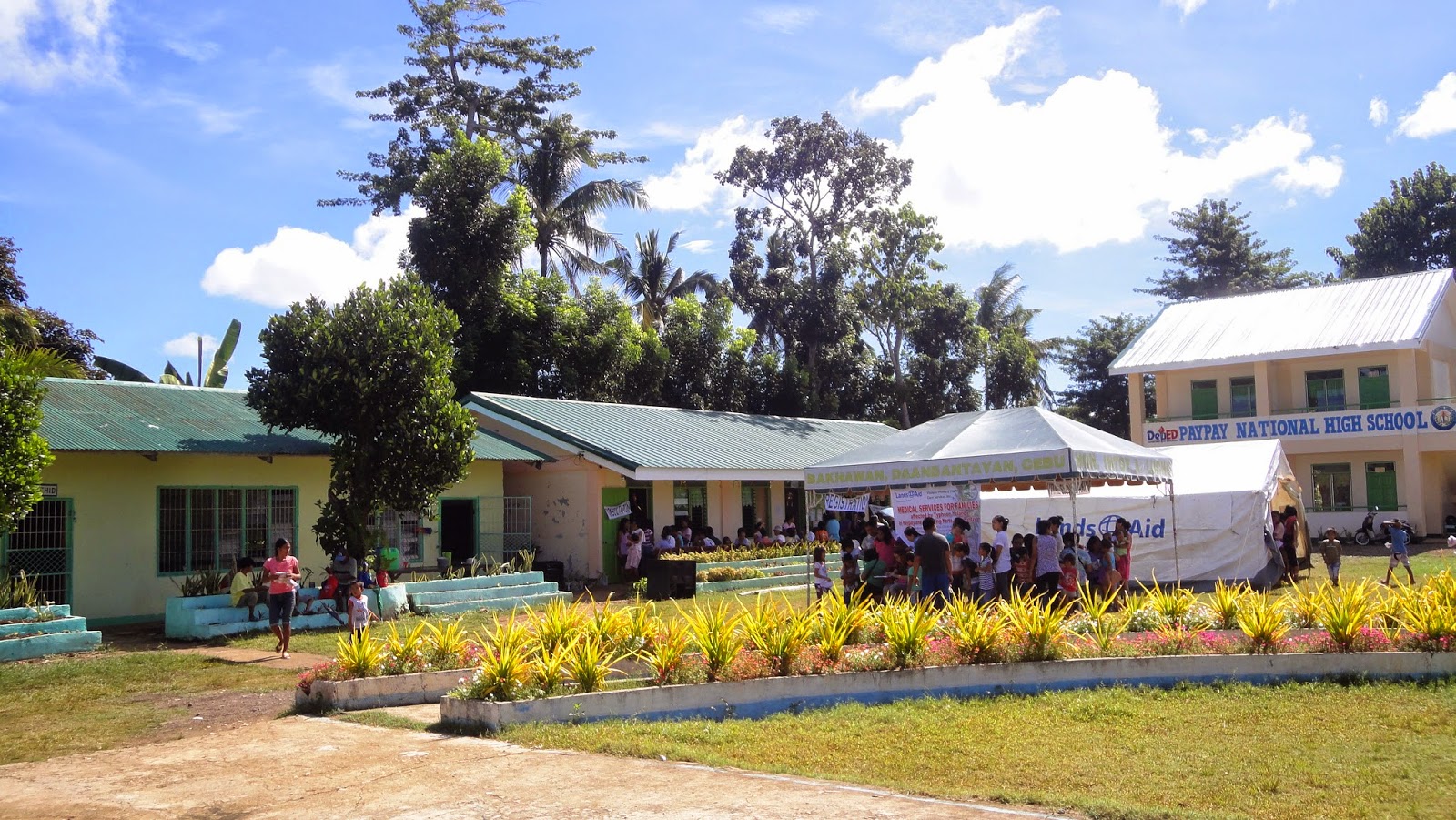Nearly 800 residents of four barangays affected by Typhoon Yolanda were served during a medical mission conducted by the Visayas Primary Health Care Services.
The residents of Barangays Tindog and Dalingding Sur, Medellin were served during the mission in Tindog last Nov. 22 and residents of Barangays Paypay and Dalingding Norte, Daanbantayan were served in Paypay on Nov. 23.
The mission site in Paypay, Daanbantayan.
Patients
waiting in LandsAid tent in Paypay.
Registration
of patients, Tindog, Medellin.
Patients waiting for medical check-up,
Tindog, Medellin.
The mission was supported by LandsAid, a German humanitarian aid organization which had earlier supported a similar mission in Barangay Tambongon, San Remegio last Sept. 14.
Services in the two day medical mission included the following, namely: medical consultations for illnesses for children and adults, diabetes screening for adults more than 40 years old, nutritional status assessment, visual acuity check-up, dental check up and urinalysis for children six years to 12 years old, eye check-up for adults and giving of reading glasses, and distribution of toothbrushes and toothpastes for children. The mission sites were the barangay hall and day care center in Tindog and the Paypay National High School.
These four barangays have established women’s organizations which were organized by the Women’s Resource Center of Visayas (WRCV), another non-government organization, as an offshoot of the relief efforts immediately after the typhoon. The Visayas Primary Health Care Services coordinated with the WRCV and the women’s organizations in organizing the mission.
Invited members of the mission team included the following, namely: 10 doctors, 12 nurses, one optometrist and 5 non-health personnel. The VPHCS had seven staff members which included one doctor and three nurses. The WRCV had a five-member team. The entire medical mission team consisted of 37 people.
In both sites, registered adult patients had their blood pressure taken and the children were also weighed by the nursing team. They were then segregated into adults and children. All adults who had eye problems were ushered to the room for eye check up, those 40 years and above had diabetes screening, after which all were attended to by the team of doctors. All children six years to 12 years old were ushered to the room for urinalysis, height and weight measurement, dental check-up and distribution of toothbrushes and toothpastes, after which they were brought to the medical consultation room. All patients were eventually attended to by the team of doctors. After their medical check-up, the patients then went to the pharmacy to get their prescribed medicines.
Dr. Marilyn Dayrit and her daughter Milka conducted
eye check-up and dispensed reading glasses.
Nurse Jessica Pausta and VPHCS staff Lourdes Geolin
test urine of the children for urinary infection.
More than 400 patients were served in Paypay.
More than 300 patients were seen in Tindog.
In Medellin, a total of 362 patients were attended to, while in Daanbantayan, there were 414. This brought the total number of patients to 776.
A total of 230 patients had their blood sugar tested for diabetes. For many of them, it was the first time that they had their blood sugar tested. Only 22 were found to be diabetic, they were all given hypoglycemic medications good for three months and advised to have regular blood sugar check-up and diet control.
Nurse Jafe Sepulveda and Cristopher Ouano
check blood sugar for diabetes.
Nearly all of the children had good eye vision and only five percent had urinary infection. However, more than 50 percent of the children had dental caries due to poor hygiene. Thus, the children were taught by the nurses about dental hygiene and proper use of toothbrush. A total of 400 toothbrushes and toothpaste were distributed in both missions.
VPHCS staff Luz Carreon conducted dental check up
for children less than 12 years old.
Dr. Erlinda Posadas with mother and child.
Nurse Hanna Liza Lora teach children proper toothbrush.
Reading eyeglasses were provided to 150 patients in Medellin and 150 patients in Daanbantayan after eye check up by an optometrist.
With new eyeglasses.
Hypertension was the leading cause of illness among the adults in the four barangays, as it is the leading cause of morbidity together with cardiovascular diseases nationwide.
The occurrence of acute respiratory tract infections, osteoarthritis, muscle pains, non-ulcer dyspepsia, tension headache and anemia among adults is seen in the context of the situation affecting the residents almost a year after Typhoon Yolanda devastated the northern towns of Cebu. With the destruction of their crops and trees (sugar cane, corn, coconut, banana, mango), the farmers had lost their source of income and food and they are still trying to cultivate their fields of food crops. Osteoarthritis, muscle pains and tension headache are common among farmers who have to work hard in the farms in order to put food on their tables, thereby putting their bodies into stress and exertion. Non-ulcer dyspepsia was also common since being farmers, they have the tendency to skip their meals while working in the fields or simply because there was no food to eat at all. Acute respiratory tract infections can be attributed to their lowered body immune system or resistance.
Medicines and medical supplies in government health centers are still lacking to meet the needs of the people. The mission dispensed appropriate medicines for the illnesses.
The few patients with other problems that needed further work-up and management were referred to tertiary hospitals in Cebu
In general, the mission was indeed successful and the patients expressed their appreciation and gratitude to the team. For the team members, it was also a meaningful experience for them to have served the farmers and residents of the community who are continuing to strive hard to live a decent life after the devastation of Typhoon Yolanda.
Happy patients.
The mission team.






























